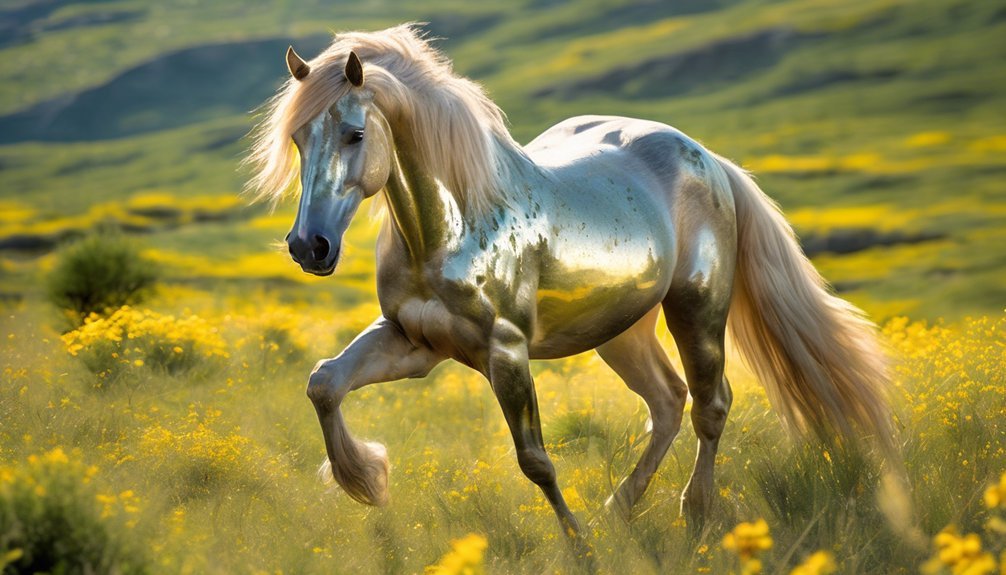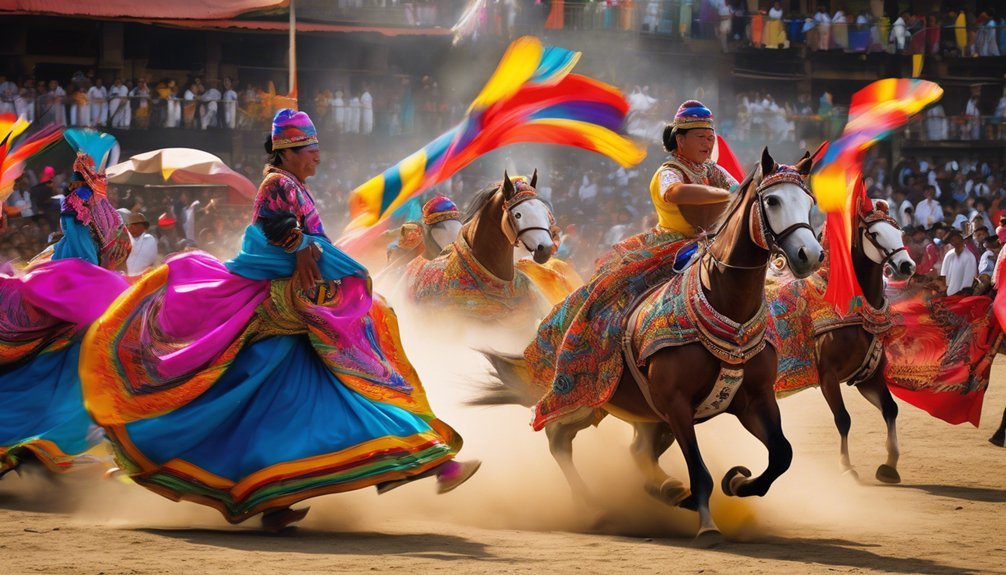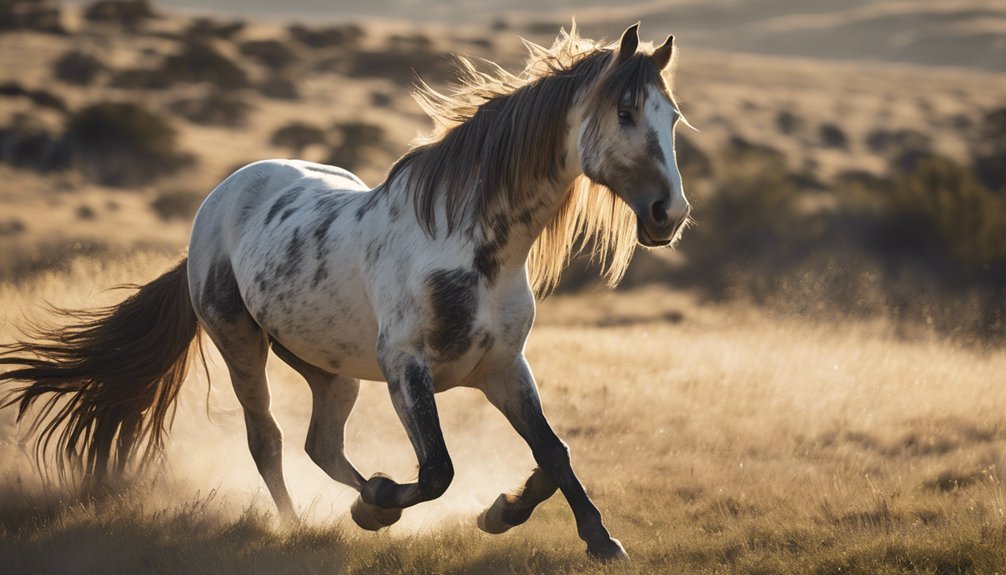
When you observe wild horses, you notice their fluid social structures and instinctual behaviors that starkly contrast with domesticated horses. These wild herds operate on mutual trust and survival, adapting to their harsh environments with keen awareness. In contrast, domesticated horses often exist within rigid hierarchies shaped by human influence. This difference raises intriguing questions about the essence of their relationships and how these dynamics impact their overall well-being. What might this mean for their future?
Key Takeaways
- Wild horses have a fluid herd hierarchy based on individual strengths, while domesticated horses often experience a more rigid structure influenced by humans.
- Wild horses develop survival skills like foraging and predator awareness, which are less emphasized in domesticated horses.
- The social bonds in wild horse herds are driven by mutual trust and survival needs, while domesticated horses may lack this instinctual depth.
- Wild horses typically avoid human contact, requiring patience and understanding for bonding, unlike domesticated horses that may be more accustomed to human interaction.
- Wild horses actively contribute to ecosystem balance, whereas domesticated horses are often managed in controlled environments that limit their ecological impact.
Social Structures and Herd Dynamics
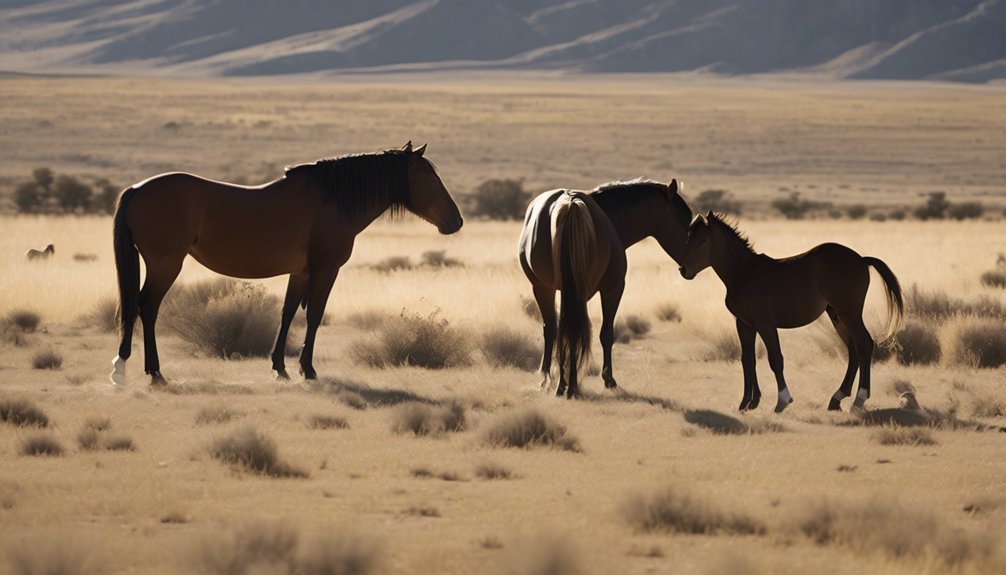
While both wild and domesticated horses exhibit complex social structures, their herd dynamics differ significantly due to their environments.
In the wild, you'll notice a fluid herd hierarchy where leadership often shifts based on individual strengths. The bonds formed among wild horses are deep, driven by the necessity for survival and mutual trust.
In contrast, domesticated horses often find their social bonding shaped by human intervention. Their herd hierarchy can become more rigid, with humans sometimes assuming the role of dominant figures.
While you may observe affection and companionship among domesticated horses, it's crucial to remember that their relationships can lack the instinctual depth seen in wild herds.
Understanding these differences enriches your appreciation for both their worlds.
Survival Skills and Adaptations
In the harsh realities of their environment, wild horses develop a range of survival skills and adaptations that are vital for their existence. You can observe their clever foraging strategies, which allow them to locate food in even the most barren landscapes. This adaptability is crucial, especially as they navigate the challenges of limited resources.
| Skill/Adaptation | Description | Importance |
|---|---|---|
| Foraging Strategies | Seeking diverse vegetation efficiently | Ensures nutritional needs are met |
| Predator Awareness | Staying alert to potential threats | Increases survival chances |
| Social Vigilance | Using herd dynamics to watch for danger | Enhances safety in numbers |
These skills reflect their resilience, showing how they've thrived despite adversity.
Physical Characteristics and Behaviors
When you observe wild horses in their natural habitat, their physical characteristics and behaviors reveal a fascinating interplay between evolution and survival.
Their coat patterns, often a blend of earthy tones, serve as camouflage, helping them blend into their surroundings, which is crucial for evading predators.
You'll notice how their hoof structure is robust and adapted to various terrains, allowing them to travel great distances in search of food and water.
These horses exhibit a strong social structure, often forming tight-knit herds that support each other in times of danger.
Their behaviors, from alertness to playful interactions, reflect instincts honed by the wild.
Witnessing this raw authenticity offers an intimate glimpse into their resilient spirit.
Interaction With Humans
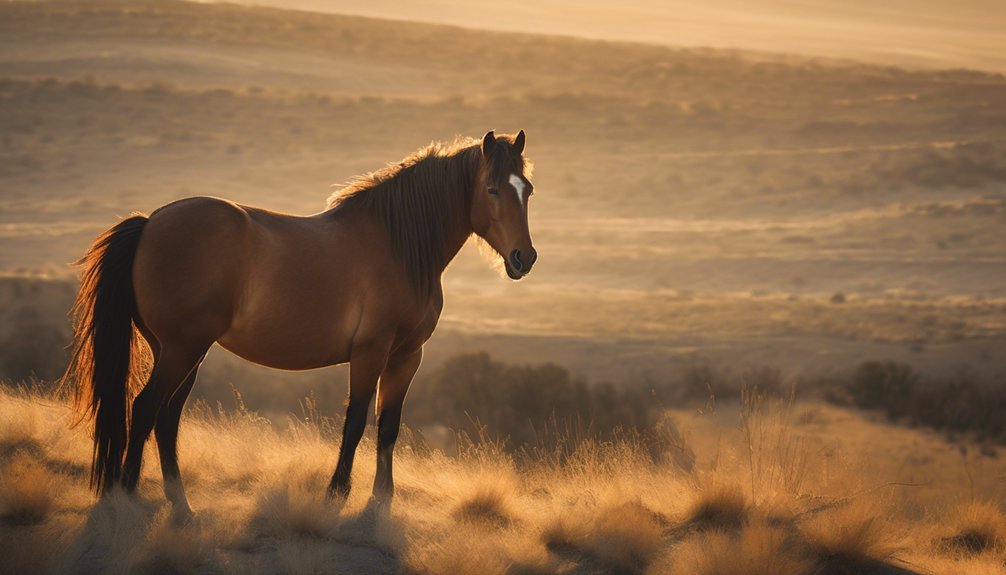
Although wild horses thrive in their natural environments, their interaction with humans often shapes their existence in profound ways. Unlike their domesticated counterparts, wild horses generally avoid human contact, driven by instincts that protect them from perceived threats.
When humans attempt to bond, it requires patience and an understanding of their wild nature. Training methods for wild horses differ significantly, focusing on building trust rather than imposing control.
You'll find that genuine human bonding emerges through shared experiences, allowing for deeper connections. As you observe, the subtle exchanges—like a softened gaze or a relaxed posture—speak volumes about their willingness to engage.
This delicate balance between instinct and interaction reveals the complexities of their relationship with humans.
Impact on Ecosystems and Conservation
While wild horses roam freely, their presence significantly influences the ecosystems they inhabit. They contribute to ecosystem balance by browsing vegetation, which helps maintain diverse plant communities. Their movements create pathways that other species use, fostering biodiversity. Understanding this impact is vital for effective conservation strategies.
| Aspect | Wild Horses Impact |
|---|---|
| Vegetation Control | Browsing prevents overgrowth |
| Soil Aeration | Hoofprints create natural tillage |
| Nutrient Cycling | Manure enriches soil |
| Habitat Creation | Trails benefit other wildlife |
| Water Access | Pooled water supports various life |
Frequently Asked Questions
How Do Wild Horses Find Food in Harsh Environments?
You'll notice wild horses employ clever foraging strategies, skillfully navigating harsh terrains. They face resource competition from other animals, adapting by seeking diverse food sources and developing resilience, showcasing their incredible tenacity for survival in challenging environments.
What Threats Do Wild Horses Face in Their Natural Habitats?
You'll notice wild horses face significant threats like habitat destruction and water scarcity. These challenges deeply impact their survival, forcing them to adapt in ways that can be heartbreaking to witness in their natural environments.
Are Wild Horses More Aggressive Than Domesticated Horses?
When you observe wild horses galloping fiercely, their wild behavior shines through. Their territorial instincts drive them to be more aggressive than domesticated horses, who've learned to coexist with humans and other gentle companions.
How Do Wild Horses Communicate With Each Other?
You'll notice wild horses communicate through subtle body language and varied vocalizations. Their movements convey emotions, while sounds express urgency or calm, creating a rich tapestry of interaction that fosters connection within their herds.
Can Wild Horses Be Trained Like Domesticated Horses?
You might find training wild horses challenging due to their behavioral differences. While some techniques overlap, understanding their instincts and social structures is crucial. Empathy and patience can foster a connection, making training more effective.
Conclusion
In understanding the differences between wild and domesticated horses, you see two worlds shaped by distinct experiences and relationships. While wild horses navigate life like a flowing river, adapting to their environment with grace and intuition, domesticated horses often find themselves in more confined spaces, shaped by human intervention. Recognizing these differences not only deepens your appreciation for these magnificent creatures but also highlights the importance of conservation efforts to protect their wild counterparts and the ecosystems they inhabit.




